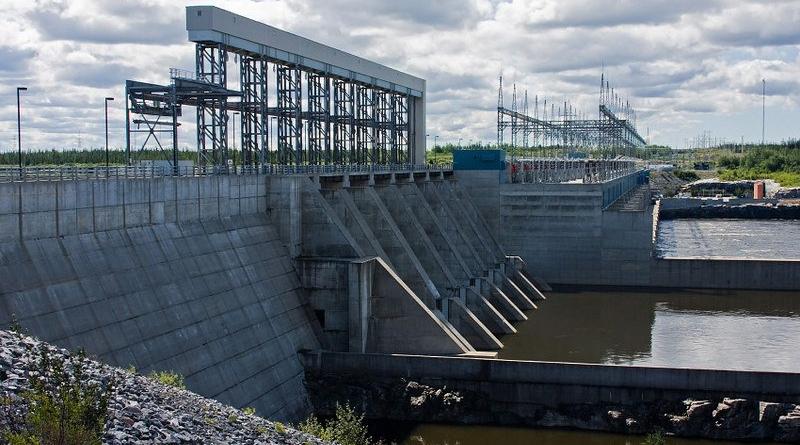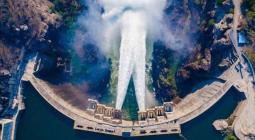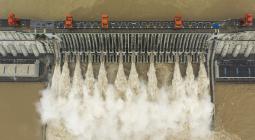Up to $185B in Investment, 8 to 9 GW of New Capacity as Hydro-Québec Unveils 2035 Plan

Hydro-Québec will invest C$155 to $185 billion by 2035 and install 8,000 to 9,000 megawatts of new grid capacity, including 3,800 to 4,200 MW of new hydroelectric generation, under a new action plan released Thursday that pledges a decarbonized grid and a reliable, affordable power supply.
“Climate change is intensifying and we must take action,” President and CEO Michael Sabia said in a release. “Québec’s clean electricity will be the driving force of the energy transition,” under a sweeping plan to “replace fossil fuels by clean electricity, create sustainable prosperity, and place customers at the heart of our decisions.”
All told, the action plan [pdf] allocates $90 to $110 billion to meet a predicted doubling of electricity demand by 2050, a total of 150 to 200 terawatt-hours (TWh) of new demand, plus $45 to $50 billion to increase system reliability and $20 to $25 billion for other operating expenses. In addition to the proposed new hydropower capacity, the utility says it will add 1,500 to 1,700 MW of new wind power and 500 to 1,000 MW of solar and storage, while saving 1,600 to 1,800 MW through energy efficiency measures. It also plans to convert 550-MW gas plant in Bécancour to generate 400 to 600 MW from renewable natural gas for “occasional use during peak periods”.
The plan assigns 40% of the new capacity to meet rising power demand in buildings and transportation and 35% to decarbonize industry, while setting aside 25% for future economic growth.
It also calls for the provincial utility to:
• Recruit 35,000 qualified workers by 2035;
• Install 5,000 kilometres of new transmission lines;
• Offer rooftop solar to more than 125,000 households;
• Facilitate Indigenous participation in new infrastructure projects and “provide First Nations and Inuit with the opportunity to draw autonomous sources of income from new energy projects”;
• Hold increases in household power bills to the inflation rate, and no more than 3% per year, while keeping industrial and commercial rates “competitive”;
• Reduce the frequency of power outages by 35% over the next seven to 10 years;
• Make it easier for households to interact with their power utility through a single point of access.
The plan also commits to consider “a wide range of solutions to increase our generating capacity and achieve our long-term decarbonization and economic prosperity goals,” reinforcing recent, controversial talk about reopening the Gentilly-2 nuclear site near Trois-Rivières “for a new nuclear power plant or small modular reactors.” Those options will be assessed “based on their technological maturity, cost, and social acceptability,” the plan says.
The big hydropower investments in the provincial plan may be the other controversial element, and the most difficult to deliver. Hydro-Québec currently operates 61 hydroelectric generating stations totalling 37.2 gigawatts (37,200 MW) of capacity, and the newest one, the $7.4-billion La Romaine facility, produces 1,550 megawatts and took 14 years to build. At one time, La Romaine was believed to be the last hydropower facility the province could affordably build, and the price points for solar, wind, and energy storage have all fallen since then.
Of the 3,800 to 4,200 MW the utility is promising to generate from falling water, the first 2,000 will come from repowering existing facilities, a strategy that “limits the footprint of hydropower development on the land and maximizes the use of existing infrastructures,” the plan says. The blueprint treats the province’s first pumped storage plant as a measure to increase generating capacity by another 1,000 MW. Then it commits to “undertake the first steps towards building new hydropower facilities” in partnership with First Nations and local communities, with no specific reference to the locations of new facilities, the megawatts to be delivered, or the target dates for project completion.
But despite the massive scale of the plan, Éric Pineault, an environmental sciences professor at the Université du Québec à Montréal, said Hydro-Québec’s vision is not particularly “transformative”, CBC reports.
“We know that if we want to do an energy transition, then we have to work our demand and change the way we use energy in our society,” Pineault said.
The utility says it will consult with citizens and stakeholders in the months ahead before finalizing the plan in 2024.
The Canadian Renewable Energy Association (CanREA) was quick to welcome the news. “We would like to highlight the scale and speed of Hydro-Québec’s planned deployment of renewable energy,” said Jean Habel, the association’s Quebec and Atlantic Canada director. “This 2035 action plan provides important long-term predictability for CanREA members, who will be key partners in the success of these plans.”
The action plan “is not only a step in the right direction towards meeting GHG reduction targets by 2050, it also clearly positions Quebec to become a major player in the production of renewable energy in Canada over the next decade,” the release added.
But despite the massive scale of the plan, Éric Pineault, an environmental sciences professor at the Université du Québec à Montréal, said Hydro-Québec’s vision is not particularly “transformative”, CBC reports.
“We know that if we want to do an energy transition, then we have to work our demand and change the way we use energy in our society,” Pineault said.
Québec Solidaire co-spokesperson Gabriel Nadeau-Dubois said the plan lacks transparency and questioned how the province would pay for it.
“We’re talking about $185 billion in the next 12 years. That’s a lot of money and it’s very fast,” he said. “And we’re saying we’re going to spend all that money and it will have no impact on the price of electricity that ordinary people pay.”
Interim Quebec Liberal leader Marc Tanguay said the plan points to the magnitude of the environmental challenges the province faces, which he attributed to five “lost” years under Coalition avenir Québec premier François Legault.
A day before the announcement, Montreal-based Équiterre published a blog post that questioned whether Quebec can continue to rely primarily on hydropower to meet growing demand for electricity, noting that a long period of power surpluses is drawing to a close. It urged the province to drive down energy demand by reducing the size and number of vehicles on the road, promoting transit and active transportation, introducing heat pumps to make electric heat more efficient, and encouraging circular and local economies.






